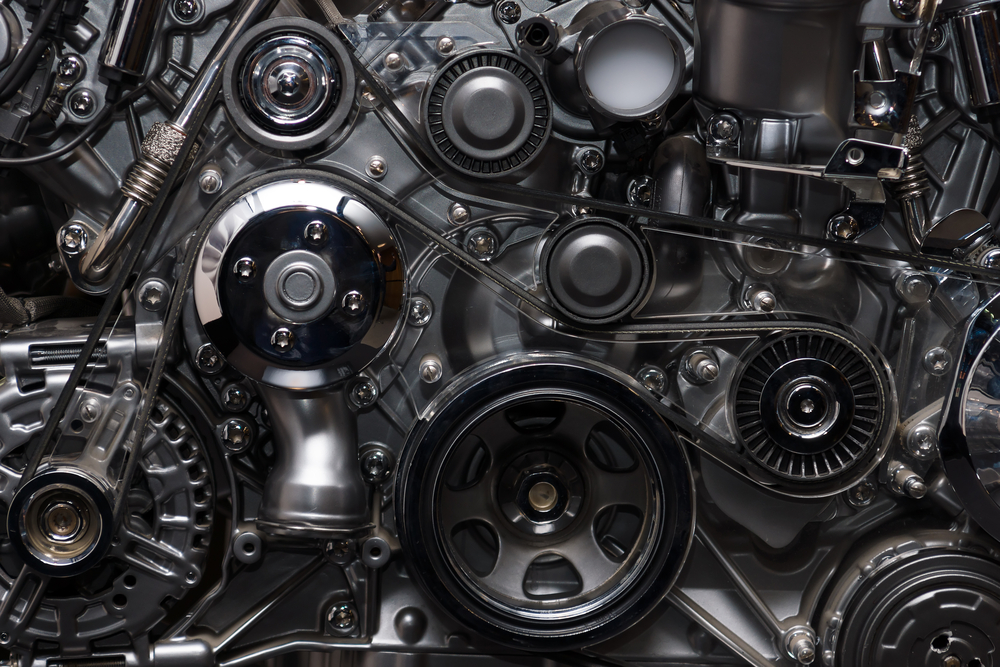 How come some lifters end up on magazine covers while some look like they never touched a weight in their lives? Well apart from the obvious fact that an increasing amount of athletes (professional or not) resort to abusing illegal substances, there’s much more to it than you think.
How come some lifters end up on magazine covers while some look like they never touched a weight in their lives? Well apart from the obvious fact that an increasing amount of athletes (professional or not) resort to abusing illegal substances, there’s much more to it than you think.
But before we start, let me make something perfectly clear:
It is exclusively up to you to reach your goals. Always was, always will be.
The industry wants you to believe it’s not. They want you to think it’s product X, Y and Z that will get you results. The industry wants you to be as uneducated and dependent as possible, and they will stop at nothing to keep you blindfolded.
But that is not your problem. Not anymore.
There are only 2 things I want you to focus on from here on out. Forget everything else you thought you knew about training or eating for muscle. This is all you will ever need to achieve your fitness goals.
- Get stronger
- Eat better
The Hardgainer’s Solution
The term “hardgainer” is often used to describe unfortunate individuals who fail to build muscular size despite lifting weights, eating tons of protein and adhering to mainstream bodybuilding principles.
I’ve seen so many lifters over the years adamantly going through their routines, pushing iron for hours while sipping on their neon-colored workout drinks and not getting any noteworthy results. The months pass, the seasons change, but their bodies don’t.
Why, you ask? Because they’re not giving their bodies a reason to change. They don’t focus on the number 1 driver of muscular growth and adaptation: Progressive overload. To further solidify their status as hardgainers, they eat a diet based on synthetic supplements and protein powders instead of real food.
As a natural athlete, pumping light weights will only get you so far. Light weights do have their place in a well-formulated training program, but they should never be the foundation of your workouts. Focus on compound over isolation movements and get stronger in the low to moderate rep ranges (5-10 reps).
If you manage to add a mere 0.5 kilos to your bench press every time you work out, how much weight will you have added in 6 months, or 2 years? Do you think you’ll still look like a pencil if you bench press twice your bodyweight? Don’t try to leapfrog ahead. Take your time, but make sure to add weight to the bar every time you train.
I don’t care how “sucky” you think your genetics are, your body has no choice but to grow if confronted with progressively heavier resistance.
Ignite the anabolic fuse
“[…] increases in muscle mass are achieved through transient elevations in anabolic hormones, such as testosterone and IGF1, induced by physical training.” (Boman, 2016)
Vigorous strength training has shown to boost anabolic (muscle-building) hormones in athletes (read, read). Training hard is only part of the picture, though. Dietary interventions are necessary to reinforce the anabolic response to strength training.
Looking at today’s most popular fitness programs, you’ll see the following nutritional strategies propagated: Eat a high protein, high carb, low-fat diet. Lots of chicken breast, egg whites, rice and whole grains. In my experience, this is the worst way to eat for muscle and strength.
You’ll also often hear the recommendation to eat anything in sight (“eat big to get big“). And while you do need to provide your body with enough energy to build muscle, stuffing your face with low-quality foods will undermine your efforts.
The quantity AND quality of your nutrition will dictate how you look, feel and perform.
In the “golden ages” of physique development, they knew a lot more about eating for muscle and strength than in today’s steroid infused, product-pushing industry. “Procuring male hormone” (testosterone) was the idea behind Vince Gironda’s (“The Iron Guru”) diet. He introduced the bodybuilding world to a regimen specifically suited to amplify the hormonal output of athletes and grant maximum muscle-building results.
The Gironda Protein Shake:
- 12 oz of half & half (50% milk and 50% cream)
- 12 raw (!) whole eggs
- 1/3 cup milk/egg protein powder
- 1 banana
Blend ingredients together and enjoy. This is 3 servings. If you’re going to drink a protein shake, make sure it looks something like this.
While acute increases in testosterone, growth hormone and IGF 1 are not to be expected after the ingestion of a particular meal, you can create non-transient elevations of anabolic hormones by eating properly.
Get excited, because I will show you how.
The Big T

“What a man what a man what a mighty good man.”
Testosterone is the principal male sex hormone and a powerful anabolic steroid. Its profound impact on protein synthesis (and subsequent muscle growth) is why you see people shooting it up their butts. Injecting exogenous hormones comes at a cost, though.
On the other hand, naturally optimizing your anabolic potential has been shown to substantially improve markers of health and performance (obviously). Apart from boosting your muscle building and fat burning capacity, testosterone also improves mood and energy levels, while lowering the risk of cardiovascular disease and osteoporosis.
In order for testosterone to work its magic, you need peak insulin sensitivity (Tsai et al, 2004). This is not covered by any popular (bullshit) routine out there.
Frequent high carbohydrate feedings→ low insulin sensitivity→ low testosterone→ no success in the gym (or the bedroom)
The Hardgainer Diet
The muscle-building “switch” (mTOR) is highly responsive to insulin. To sensitize your insulin receptors and boost your anabolic potential, I recommend eating less frequently. 2-3 meals a day are all you need. Constantly eating will diminish insulin sensitivity and negatively impact your body composition.
Furthermore, I want you to increase the consumption of fats (especially saturated and monounsaturated) in your diet. Dietary fats are your natural steroids, proven time and time again to increase testosterone concentrations (Volek et al, 1997). The best sources are eggs, dairy, beef, avocados, nuts, olives, dark chocolate, coconut milk/ butter.
The human body has not evolved to cope with a high carbohydrate intake. Keep insulin at bay by switching from a grain-based to a more balanced diet.
You also don’t need as much protein as you think. Diets high in protein are notorious for lowering testosterone so keep protein at 20-30% (approx. 0.8 grams per pound of bodyweight) of your calories. More is not better, especially if you struggle to gain weight. Moderate your protein intake, ditch the shakes and stop killing your gym buddies with those nasty protein farts.
Should you start “bulking”?
You could be eating the perfect diet, but if you’re consuming too little food, you’re not going to gain any muscle. Your body can’t build muscle out of thin air, so make sure to eat sufficient protein, fats and carbs every day to supply enough building blocks for the synthesis of new tissue.
Don’t go crazy on the chicken nuggets, though. Excessive calories over a prolonged period will inevitably lead to fat gain. Stuffing yourself in hopes of getting big will only get you fat (remember insulin sensitivity!). A higher BMI is also related to lower levels of testosterone in men.
Eat at a moderate caloric surplus (200-300 calories above maintenance) to keep fat gain at bay and keep your body in a peak anabolic state by alternating between days of higher and days of lower calories (more on this strategy here).
How to become a muscle-building machine:
- Get stronger
- Eat more fats
- Reduce meal frequency
- Alternate between surplus and deficit days
- Read my articles
Forget supplements, throw away your fitness magazines and ignore the latest mainstream buzz. Get stronger in the gym, eat like a champion and ignite the anabolic fuse.
Thank you for reading
Victor
Resources
Boden, G. et al (2015). Excessive caloric intake acutely causes oxidative stress, GLUT4 carbonylation, and insulin resistance in healthy men. In: Science Translational Medicine 09 Sep 2015: Vol. 7, Issue 304, pp. 304re7
Boman, Niklas (2016). Building Muscle: A translation of training adaptation. Umeå University, Faculty of Medicine, Department of Community Medicine and Rehabilitation.
Craig, B.W./ Brown, R./ Everhart, J. (1989). Effects of progressive resistance training on growth hormone and testosterone levels in young and elderly subjects. Mechanisms of Ageing and Development. Vol 49, Iss 2. 159-169
Hakkinen, K./ , A./ , M./ , H./
Tsai, E.C./ Matsumoto, A.M./ Fujimoto, W.Y./ Boyko, E.J. (2004). Association of bioavailable, free, and total testosterone with insulin resistance: influence of sex hormone-binding globulin and body fat. Diabetes Care April 2004 vol. 27 no.4 861-868
Kadi, F. (2008). Cellular and molecular mechanisms responsible for the action of testosterone on human skeletal muscle. A basis for illegal performance enhancement. Br J Pharmacol. 154(3):522-8.
Kapoor, D/ Goodwin, E./ Channer, K.S./ Jones, T.H. (2006). Testosterone replacement therapy improves insulin resistance, glycaemic control, visceral adiposity and hypercholesterolaemia in hypogonadal men with type 2 diabetes.
Pasquali, R., F. Casimirri, R. De Iasio, P. Mesini, S. Boschi, R. Chierici, R. Flamia, M. Biscotti, and V. Vicennati. “Insulin Regulates Testosterone and Sex Hormone-Binding Globulin Concentrations in Adult Normal Weight and Obese Men.” Journal of Clinical Endocrinology and Metabolism 80 (1995): 654–58.
Volek, J.S./ Kraemer, W.J./ Bush, J.A./ Incledon, T./ Boetes, M. (1997). Testosterone and cortisol in relationship to dietary nutrients and resistance exercise. Journal of Applied Physiology Published 1 January 1997 Vol. 82 no. 1, 49-54
Wang, C./ Alexander, G./ Berman, N./ Salehian, B./ Davidson, T./ McDonald, V./ Steiner, B./ Hull, L./ Callegari, C./ Swerdloff, R.S. (1996).Testosterone replacement therapy improves mood in hypogonadal men–a clinical research center study. J Clin Endocrinol Metab. 81(10):3578-83.
Welle, S./ Jozefowicz, R./ Forbes, G./ Griggs, R.C. (1992). Effect of testosterone on metabolic rate and body composition in normal men and men with muscular dystrophy. J Clin Endocrinol Metab. 74(2):332-5.
[…] how I told you that peak insulin sensitivity was the key to maximum health and performance? Think about it, in response to a lower eating […]